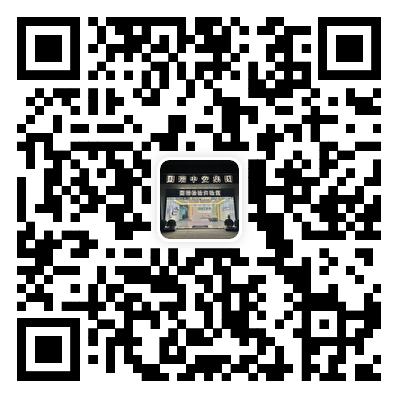The approval process for NMPA registration of Class I medical devices in China is relatively straightforward compared to Class II and III devices, as these devices are considered low risk. However, it still involves several key steps to ensure the product complies with China’s regulatory requirements. Below is an overview of the NMPA registration process for Class I medical devices:
1. Classification of the Medical Device
Before starting the registration process, it’s essential to confirm that your device is classified as Class I. In China, medical devices are classified into three categories:
- Class I: Low risk (e.g., bandages, thermometers, and simple diagnostic devices).
- Class II: Moderate risk (e.g., infusion pumps, blood pressure monitors).
- Class III: High risk (e.g., pacemakers, heart valves).
Class I medical devices are considered to have minimal risk and do not require clinical trials or extensive testing compared to higher-risk devices.
2. Appointment of a Local Agent
Foreign manufacturers are required to appoint a local authorized agent in China to handle the registration process. This agent is responsible for communicating with the NMPA on behalf of the manufacturer. The local agent must be a legal entity in China (such as a Chinese company) that is registered with the NMPA to act as the representative of foreign manufacturers.
3. Prepare the Required Documentation
Although the process for Class I devices is simpler, certain documentation must still be prepared to comply with NMPA requirements. The following documents are typically needed:
- Product Description: A detailed description of the device, including its function, specifications, and intended use.
- Manufacturing Information: Evidence that the manufacturer complies with quality management system standards, such as ISO 13485 (if applicable).
- Device Labeling: The labeling must comply with Chinese regulations, and all product labels and user manuals must be in Chinese.
- Product Testing (if applicable): For Class I devices, testing requirements are generally minimal, but you may need to provide certificates showing that the device meets basic safety standards (e.g., electrical safety or biocompatibility). This will depend on the nature of the device.
- Business License of the Manufacturer: A copy of the manufacturer's business license.
- Authorized Agent’s Power of Attorney: A legal document that designates the local agent to represent the manufacturer for registration purposes.
For Class I devices, clinical data or trial results are typically not required, as they are considered low-risk devices. However, NMPA may still request additional technical information if necessary.
4. Submit the Registration Application
Once all the required documents are prepared, the local agent submits the registration application to the NMPA. Class I devices generally do not require an in-depth review process. Instead, the NMPA reviews the documents to verify compliance with regulatory standards.
5. Review and Acceptance by NMPA
The NMPA will conduct a document review to assess whether all required documentation has been submitted and whether the device complies with China’s medical device regulations. The NMPA’s review typically focuses on:
- The safety and efficacy of the device (from a low-risk perspective).
- The consistency of the device with Chinese regulations and standards.
Since Class I devices are considered low risk, the NMPA’s review process is usually quick and typically takes 30-60 days. If the documents are complete and meet the regulatory requirements, the NMPA will approve the registration.
6. Issuance of the Registration Certificate
Once the NMPA completes the review and determines that the Class I medical device meets regulatory requirements, it will issue the Medical Device Registration Certificate. This certificate is required to legally market the device in China.
- The registration certificate typically has a validity of 5 years. After this period, manufacturers must apply for renewal.
7. Post-Market Surveillance
After obtaining the registration, manufacturers must comply with China’s post-market surveillance requirements. This includes:
- Reporting adverse events: Any serious incidents or device failures must be reported to the NMPA.
- Product recalls: If the device is found to be faulty or harmful, the manufacturer must initiate a recall and notify the NMPA.
Additionally, manufacturers must ensure that the device continues to meet Chinese regulatory standards and renew the registration every 5 years.
Key Points to Remember for Class I Medical Devices
- No Clinical Trials Required: For most Class I devices, clinical data or trials are not needed.
- Simpler Review Process: The NMPA's review process is simpler and faster for Class I devices compared to higher-risk devices.
- Local Agent Requirement: Foreign manufacturers must appoint a local agent in China who will handle the registration process.
- Shorter Timeline: The timeline for Class I registration is relatively quick, usually 1-2 months.
- Basic Documentation: Required documents are relatively straightforward, but all labels and user manuals must be in Chinese.
Timeline Overview
- Class I Devices: Typically 1-2 months from submission to approval, depending on the completeness of the application and the device type.
Costs
- The costs for Class I registration are generally lower than for Class II and III devices. However, costs can vary depending on the local agent’s fees and the specific device. Generally, fees for Class I registration range from several hundred to a few thousand USD.
Summary of Key Steps:
- Confirm the device is classified as Class I.
- Appoint a local agent in China.
- Prepare and submit documentation to the NMPA.
- Undergo a document review by the NMPA (approximately 30-60 days).
- Receive the Medical Device Registration Certificate.
- Comply with post-market surveillance and renewal requirements.
Resources and Links:
By following this process, manufacturers of Class I medical devices can achieve NMPA approval and gain access to the Chinese market. It’s essential to ensure that all documentation is accurate and complete, as this will speed up the registration process.
.jpg)
.png)

